
The Sacred Valley of Qadisha: A Journey Through Time and Nature
Explore Qadisha Valley in Lebanon: A blend of spiritual sanctuaries, stunning landscapes, and rich cultural history nestled in one of the world's most beautiful valleys.
Nestled in the heart of Lebanon, Qadisha Valley, also known as the Holy Valley, is a haven for those seeking both spiritual and natural beauty. This UNESCO World Heritage site is renowned for its deep gorges, ancient monasteries, and lush landscapes. As you wander through the valley, you'll encounter secluded hermitages and age-old churches carved into the cliffs. These sacred sites have offered refuge to Christian monks for centuries, making Qadisha Valley a place of profound historical and religious significance. The valley is not just a spiritual retreat but also a nature lover's paradise. The Qadisha River runs through the valley, creating a fertile environment that supports a diverse range of flora and fauna. Hiking trails of various difficulty levels wind through the valley, offering stunning views of cedar forests, waterfalls, and the surrounding mountains. Whether you're an avid hiker or a casual walker, the trails provide an immersive experience into the valley's serene and untouched beauty. For those interested in cultural history, the valley is home to the Monastery of Qozhaya, one of the oldest in Lebanon, and the Monastery of Saint Anthony of Qozhaya, which houses ancient manuscripts and religious artifacts. The nearby town of Bcharre, the birthplace of the famous poet Khalil Gibran, adds another layer of cultural richness to your visit. A trip to Qadisha Valley is not complete without exploring the Gibran Museum, where you can delve into the life and works of this literary giant.
Local tips in Qadisha Valley
- Visit during spring or autumn for the best weather and to avoid the summer heat.
- Wear comfortable hiking shoes; the trails can be steep and rocky.
- Carry water and snacks as there are limited facilities within the valley.
- Hire a local guide to enrich your experience with historical and cultural insights.
- Be respectful of the religious sites and dress modestly when visiting monasteries.
- Check the opening hours of the Gibran Museum ahead of time.
The Sacred Valley of Qadisha: A Journey Through Time and Nature
Nestled in the heart of Lebanon, Qadisha Valley, also known as the Holy Valley, is a haven for those seeking both spiritual and natural beauty. This UNESCO World Heritage site is renowned for its deep gorges, ancient monasteries, and lush landscapes. As you wander through the valley, you'll encounter secluded hermitages and age-old churches carved into the cliffs. These sacred sites have offered refuge to Christian monks for centuries, making Qadisha Valley a place of profound historical and religious significance. The valley is not just a spiritual retreat but also a nature lover's paradise. The Qadisha River runs through the valley, creating a fertile environment that supports a diverse range of flora and fauna. Hiking trails of various difficulty levels wind through the valley, offering stunning views of cedar forests, waterfalls, and the surrounding mountains. Whether you're an avid hiker or a casual walker, the trails provide an immersive experience into the valley's serene and untouched beauty. For those interested in cultural history, the valley is home to the Monastery of Qozhaya, one of the oldest in Lebanon, and the Monastery of Saint Anthony of Qozhaya, which houses ancient manuscripts and religious artifacts. The nearby town of Bcharre, the birthplace of the famous poet Khalil Gibran, adds another layer of cultural richness to your visit. A trip to Qadisha Valley is not complete without exploring the Gibran Museum, where you can delve into the life and works of this literary giant.
When is the best time to go to Qadisha Valley?
Iconic landmarks you can’t miss
Cedars of God Bsharri
Discover the breathtaking Cedars of God in Bsharri, a UNESCO World Heritage Site showcasing ancient forests, rich history, and stunning landscapes.

دير مار أنطونيوس الكبير قزحيا - الرهبانية اللبنانية المارونية
Experience the spiritual tranquility of Deir Mar Antonios Qozhaya Monastery, an ancient gem in Lebanon's stunning Qozhaya Valley.

Horsh Ehden
Discover the enchanting landscapes and rich biodiversity of Horsh Ehden National Reserve, a natural gem in Lebanon perfect for adventure and relaxation.

Kahlil Gibran Museum
Explore the Kahlil Gibran Museum in Bsharri, a serene homage to the poet's life and work surrounded by breathtaking Lebanese landscapes.

Saydet el Hosn - Lady of the Fortress سيدة الحصن
Discover the serene beauty and rich heritage of Saydet el Hosn, a breathtaking church in Ehden, Lebanon, offering stunning views and spiritual solace.

Monastery of Mar Lishaa
Discover the Monastery of Mar Lishaa in Bsharri, a breathtaking sanctuary of spirituality, history, and stunning natural landscapes.
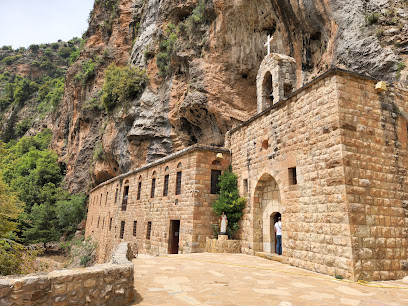
Kadisha Valley
Explore the enchanting Kadisha Valley, a UNESCO World Heritage site in Lebanon, known for its stunning landscapes, ancient monasteries, and rich cultural heritage.
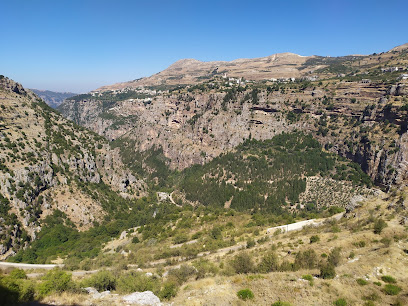
Qannoubin Valley
Explore the breathtaking Qannoubin Valley, a serene hiking haven in Lebanon, rich in natural beauty and historical significance.

Kadisha cave bcharre
Discover the breathtaking natural beauty and rich history of Kadisha Cave in Bcharre, a hidden gem in the heart of Lebanon's majestic mountains.

Qadisha
Discover the breathtaking Qadisha Valley, a UNESCO World Heritage site boasting stunning landscapes and rich historical treasures in Lebanon.

Qannoubine Valley Bsharri
Experience the breathtaking beauty and spiritual heritage of Qannoubine Valley in Bsharri, Lebanon—a serene destination for nature and culture enthusiasts.

Valley qadisha
Explore the stunning Valley of Qadisha, a UNESCO World Heritage site, known for its breathtaking landscapes, ancient monasteries, and rich history.

Saint elias to kadisha valley
Discover the stunning landscapes and rich history of Saint Elias to Kadisha Valley, a UNESCO World Heritage site perfect for hiking enthusiasts and nature lovers.

Saint Yaakoub - too Kadisha valley
Explore the enchanting Saint Yaakoub in Kadisha Valley, a hiking paradise nestled in Lebanon's breathtaking landscapes and rich history.

Essential places to dine
Al Zaytouni - Bcharre
Savor authentic Lebanese cuisine with stunning mountain views at Al Zaytouni in Bcharre.

Masa Restaurant
Discover exquisite Lebanese cuisine at Masa Restaurant inside Samar Resort, where local flavors meet international flair amidst stunning views.

Platanus
Experience authentic Lebanese cuisine at Platanus in Ehden—where every meal is a celebration of flavor amidst stunning scenery.

Jalset Al Sayyad - جلسة الصياد
Discover authentic Lebanese flavors at Jalset Al Sayyad in Ehden - where exquisite cuisine meets breathtaking views.

Abou Joseph Restaurant
Experience authentic Lebanese cuisine with breathtaking views at Abou Joseph Restaurant in Bsharri.
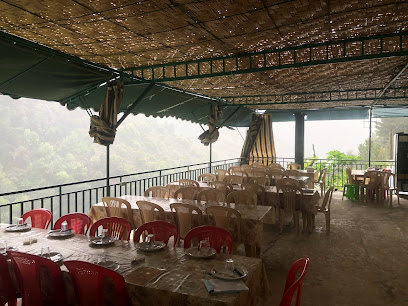
Sobh W Massa
Discover authentic Lebanese flavors at Sobh W Massa in Ehden - a culinary haven for food lovers seeking memorable dining experiences.

Francis restaurant
Discover authentic Lebanese cuisine at Francis Restaurant in Bsharri - where every dish tells a story amidst stunning mountain views.

Le Pichet des Cèdres - Restaurant
Experience authentic Lebanese cuisine at Le Pichet des Cèdres in Ariz—where every meal is a celebration of local flavors and warm hospitality.

Arzat lunch buffet
Discover the essence of Lebanese cuisine at Arzat Lunch Buffet—where every bite tells a story amidst stunning landscapes.
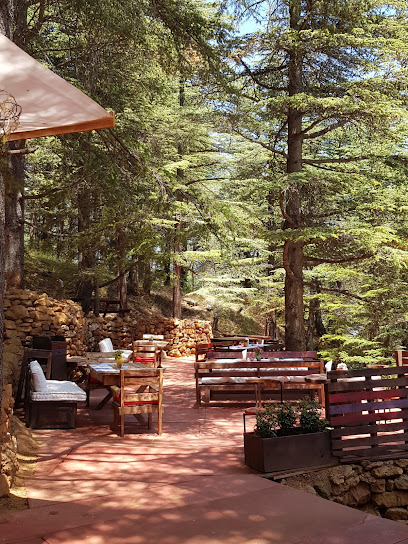
A Legna
Discover authentic Lebanese flavors at A Legna in Ehden - where every dish tells a story of tradition and passion.

Tripple T Restaurant
Discover authentic Lebanese flavors at Tripple T Restaurant, nestled in the heart of Bsharri's stunning mountain scenery.

Atlal - Restaurant
Discover authentic Lebanese flavors at Atlal Restaurant in Bsharri with breathtaking mountain views and warm hospitality.
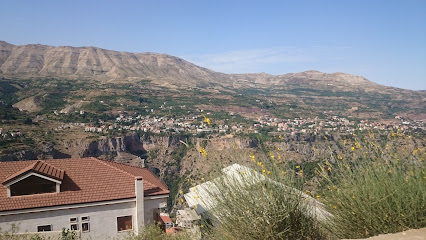
Restaurant saba
Discover authentic Lebanese flavors at Saba Restaurant in Ehden - where culinary excellence meets stunning mountain views.
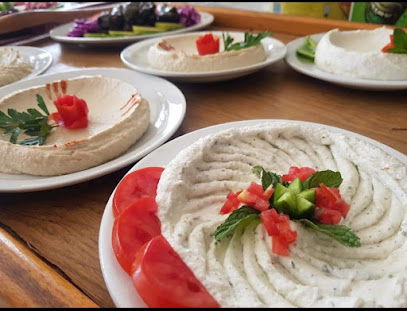
Mar Semaan Restaurant
Experience the essence of Lebanese cuisine at Mar Semaan Restaurant in Bsharri—where flavor meets tradition in a picturesque setting.

Al naher restaurant
Experience authentic Lebanese cuisine amidst the breathtaking beauty of Wadi Qadisha at Al Naher Restaurant.

Markets, malls and hidden boutiques
Kadisha
Explore local flavors and essentials at Kadisha, the premier supermarket in Bohssas, Lebanon, perfect for tourists looking for authentic products.

Kadisha Valley
Discover the breathtaking beauty and rich history of Kadisha Valley, a serene ravine in Lebanon renowned for its stunning landscapes and ancient monasteries.

Kadisha Hypermarket - Qobeh
Discover the vibrant shopping experience at Kadisha Hypermarket in Tripoli, where local culture meets convenience and variety.

Easy Shop
Experience local flavors and diverse products at Easy Shop, the essential supermarket in Ehden, Lebanon for travelers and locals alike.

Patisserie Angela
Discover the sweet delights of Patisserie Angela in Ehden, where traditional Lebanese pastries meet modern culinary artistry.

Valley qadisha
Explore the enchanting Valley Qadisha, a UNESCO site rich in history, stunning landscapes, and ancient monasteries nestled in Lebanon's heart.

Nehme - Pharmacy
Discover Nehme Pharmacy in Ehden: your go-to destination for health essentials, expert advice, and exceptional service.

Molino Café
Experience the delightful ambiance and exquisite flavors at Molino Café, a must-visit coffee shop in Ehden's Old Town.

Lavender shop
Experience the soothing essence of lavender in Hazerta's charming perfume store, featuring exquisite lavender products and delightful aromas.

Premium Liquors and Cigars - Ehden
Explore the finest selection of liquors and premium cigars in the picturesque town of Ehden, where quality meets tradition.

Milad Gitany Dollar Shop
Explore Milad Gitany Dollar Shop in Ehden for affordable treasures and local charm, perfect for budget-savvy travelers seeking unique finds.
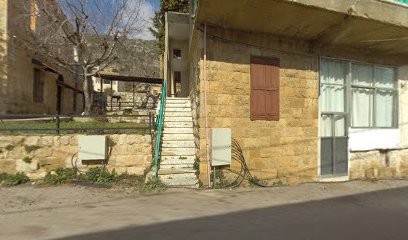
ABZ_CELL
Explore cutting-edge mobile technology at ABZ_CELL in Ehden, where expert advice and the latest gadgets enhance your travel experience.

Pin & Pan
Discover the sweet essence of Lebanese pastries at Pin & Pan, a charming shop in Ehden that promises delightful treats for every palate.

Pour Elle Accessories
Explore handcrafted elegance at Pour Elle Accessories, the perfect jewelry store for unique treasures and personalized service.

Orquidea Boutique
Explore the vibrant fashion scene at Orquidea Boutique in Deir Zahrane, where tradition meets modern elegance in unique clothing designs.

Essential bars & hidden hideouts
BarVu
Experience the vibrant nightlife at BarVu, offering exquisite cocktails and stunning views in the heart of Ehden's MIST Hotel & Spa.

Haze Sunset Bar
Discover Haze Sunset Bar in Ehden - your ultimate destination for breathtaking views and exquisite drinks.
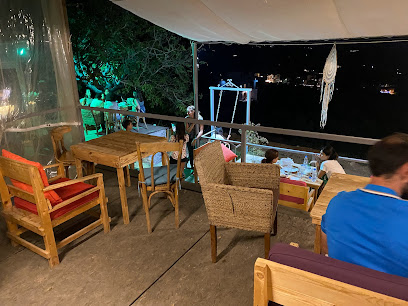
BBA'S JunkYard
Discover the vibrant ambiance of BBA'S JunkYard, a must-visit bar in Kfarsghab, Lebanon, blending local flavor with a lively atmosphere.

Minus Pub
Experience the vibrant nightlife of Ehden at Minus Pub, where friendly vibes and fantastic shots await in a lively atmosphere.

A Legna
Discover the essence of Lebanese cuisine at A Legna, a charming restaurant in the heart of Ehden, where every meal is a celebration of local flavors.

Vee Lounge
Discover the vibrant atmosphere of Vee Lounge in Ehden, where diverse drinks and friendly service create the perfect retreat for tourists.

fruitbar
Explore the lively ambiance of Fruitbar in Bsharri, a must-visit pub for an authentic Lebanese nightlife experience.

سرود ع برود
Experience the rich flavors of Lebanese cuisine at سرود ع برود, a top-notch restaurant in Ehden that delights every palate.

Bhava
Experience the vibrant nightlife of Ehden at Bhava, a bar blending refreshing drinks with a lively atmosphere and stunning mountain views.

Aden
Discover the vibrant atmosphere and diverse drink menu at Aden, Ehden's premier bar for an unforgettable nightlife experience.
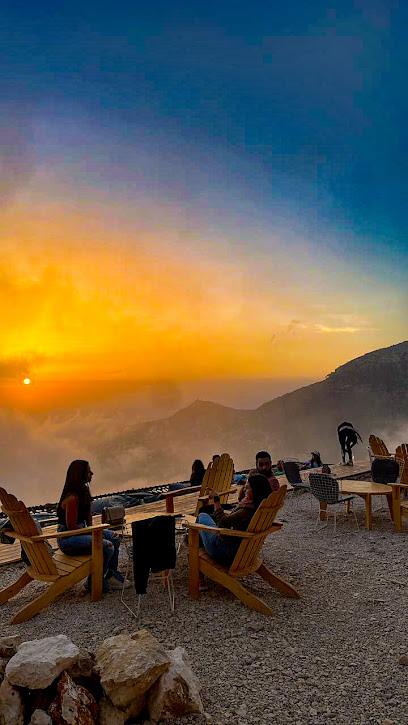
Loui’s Bar
Experience the vibrant nightlife at Loui’s Bar in Ehden, where great drinks and a lively atmosphere create unforgettable memories.

Muse bar
Discover Muse Bar in Bsharri, a vibrant hotspot featuring an extensive drink menu and an inviting atmosphere perfect for socializing.

Le Bro
Discover Le Bro in Ehden - a vibrant bar offering local drinks and a lively atmosphere perfect for unwinding after exploring Lebanon's beauty.

Enchanted - Lounge Bar
Experience enchanting evenings at the premier lounge bar in Ehden, offering exquisite drinks and a serene atmosphere.
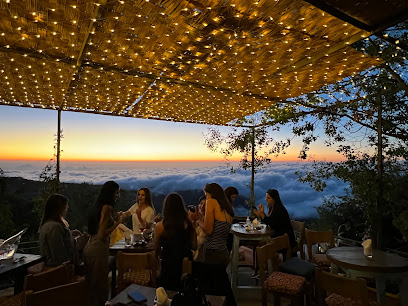
مسمكة آل تادروس ما عدا ريمون
Experience the lively nightlife at مسمكة آل تادروس ما عدا ريمون, a vibrant bar in Bane offering local drinks and unforgettable social experiences.

Local Phrases about Qadisha Valley
-
- Helloمرحبا
[marhaba] - Goodbyeوداعا
[wada'an] - Yesنعم
[naam] - Noلا
[laa] - Please/You're welcomeمن فضلك
[min fadlak] - Thank youشكرا
[shukran] - Excuse me/Sorryعذرا
[aadhara] - How are you?كيف حالك؟
[kayfa halak?] - Fine. And you?بخير. وأنت؟
[bikhayr. wa ant?] - Do you speak English?هل تتكلم الإنجليزية؟
[hal tatakallam al'injlizia?] - I don't understandلا أفهم
[laa afham]
- Helloمرحبا
-
- I'd like to see the menu, pleaseأريد أن أرى القائمة من فضلك
[urid an ara alqaimah min fadlak] - I don't eat meatأنا لا آكل اللحم
[ana la aakol allahm] - Cheers!صحتين!
[sahatayn] - I would like to pay, pleaseأريد أن أدفع من فضلك
[urid an adfa min fadlak]
- I'd like to see the menu, pleaseأريد أن أرى القائمة من فضلك
-
- Help!مساعدة!
[musa'adah!] - Go away!انصرف!
[ansarif!] - Call the Police!اتصل بالشرطة!
[itasil bialshurta!] - Call a doctor!اتصل بطبيب!
[itasil bitabib!] - I'm lostلقد ضللت الطريق
[laqad dalalat altariq] - I'm illأنا مريض
[ana mareed]
- Help!مساعدة!
-
- I'd like to buy...أريد أن أشتري...
[urid an ashtari...] - I'm just lookingأنا فقط أتطلع
[ana faqat atatallaa] - How much is it?بكم هذا؟
[bi kam hadha?] - That's too expensiveهذا غالي جدا
[hadha ghali jiddan] - Can you lower the price?هل يمكنك تخفيض السعر؟
[hal yumkinuk takhfeid alsu'r?]
- I'd like to buy...أريد أن أشتري...
-
- What time is it?كم الساعة؟
[kam alsaa'a?] - It's one o'clockالساعة الواحدة
[alsaa'ah alwahidah] - Half past (10)الساعة العاشرة و النصف
[alsaa'ah alaashirah wa alnisf] - Morningصباح
[sabah] - Afternoonبعد الظهر
[ba'd althuhr] - Eveningمساء
[masa'] - Yesterdayأمس
[ams] - Todayاليوم
[alyawm] - Tomorrowغدا
[ghadan] - 1واحد
[wahid] - 2اثنان
[ithnan] - 3ثلاثة
[thalatha] - 4أربعة
[arba'a] - 5خمسة
[khamsa] - 6ستة
[sitta] - 7سبعة
[sab'a] - 8ثمانية
[thamania] - 9تسعة
[tasia] - 10عشرة
[ashara]
- What time is it?كم الساعة؟
-
- Where's a/the...?أين هو/هي ...؟
[ayn huwa/hiya...?] - What's the address?ما هو العنوان؟
[ma huwa al'anaan?] - Can you show me (on the map)?هل يمكنك أن تريني (على الخريطة)؟
[hal yumkinuk an tureeni (ala alkharitah)?] - When's the next (bus)?متى يأتي الحافلة التالية؟
[mata yaati alhaafilah altaliyah?] - A ticket (to ....)تذكرة (إلى ....)
[tadhkirah (ila ....)]
- Where's a/the...?أين هو/هي ...؟
History of Qadisha Valley
-
Qadisha Valley, also known as the Holy Valley, has been a site of Christian monasticism since the early centuries of Christianity. Hermitages and monasteries dot the landscape, as monks sought the isolation and solitude offered by the valley's rugged terrain. The Monastery of St. Anthony in Qozhaya and the Monastery of St. Elisha are among the most notable, serving as spiritual centers and places of refuge throughout the centuries.
-
The valley is a significant site for the Maronite Christian community, a major ethno-religious group in Lebanon. During the 7th century, Maronite monks settled in the area, fleeing persecution. The Maronite Patriarchate was based in Qadisha for centuries, and many historic churches and monastic buildings reflect the unique Maronite architectural style and religious traditions.
-
During the Ottoman period, Qadisha Valley served as a refuge for Christians seeking to escape Ottoman rule and persecution. The valley's remote and inaccessible geography made it a safe haven. Numerous monasteries and hermitages were fortified and hidden within the cliffs, protecting their inhabitants and religious artifacts from potential invaders.
-
Qadisha Valley has inspired countless poets, writers, and artists. The famous Lebanese-American poet and philosopher Khalil Gibran, author of 'The Prophet,' was born in the nearby town of Bsharri. His works were deeply influenced by the valley's natural beauty and spiritual ambiance. The Gibran Museum in Bsharri houses many of his manuscripts and personal belongings.
-
In 1998, Qadisha Valley, along with the nearby Forest of the Cedars of God, was designated a UNESCO World Heritage Site. This recognition was due to its exceptional cultural, historical, and natural value. The valley's well-preserved monastic settlements, churches, and hermitages provide a profound glimpse into the region's religious history and its role in the development of monastic life.
-
Qadisha Valley's stunning natural landscape includes dramatic cliffs, lush forests, and the Qadisha River. The valley is home to diverse flora and fauna, some of which are endemic to the region. The Forest of the Cedars of God, located at the valley's edge, contains some of the last remaining ancient cedar trees, which are a symbol of Lebanon and have been revered since antiquity.
Qadisha Valley Essentials
-
Qadisha Valley is located in northern Lebanon. The nearest international airport is Beirut–Rafic Hariri International Airport in Beirut, approximately 120 kilometers away. From Beirut, you can take a taxi or a bus to the city of Tripoli, which is about 85 kilometers from Qadisha Valley. From Tripoli, local taxis or buses can take you to the valley. The entire journey from Beirut to Qadisha Valley typically takes around 3 to 4 hours, depending on traffic and road conditions.
-
Within Qadisha Valley, transportation options include taxis, private car rentals, and local minibuses (known as 'servees'). Walking is also a popular way to explore the valley, especially for reaching remote monasteries and hiking trails. Renting a car can provide the flexibility to explore at your own pace, but be mindful of the narrow and winding roads.
-
The official currency in Lebanon is the Lebanese Pound (LBP). However, US dollars are widely accepted, especially in tourist areas. Credit cards are accepted in hotels, restaurants, and larger shops, but it's advisable to carry cash, particularly in remote areas and smaller establishments. ATMs are available in nearby towns like Tripoli, so ensure you withdraw enough cash before heading into the valley.
-
Qadisha Valley is generally safe for tourists, but standard precautions should always be taken. Avoid walking alone at night in isolated areas and be cautious with your belongings in crowded places. Lebanon has areas with political instability, though Qadisha Valley itself is relatively calm. It’s best to stay updated on current travel advisories. High-crime areas targeting tourists are rare in the valley, but remain vigilant.
-
In case of emergency, dial 112 for police or 140 for medical emergencies. There are local medical clinics in nearby towns, but for serious medical issues, it may be necessary to go to a hospital in Tripoli or Beirut. Ensure you have travel insurance that covers medical emergencies and evacuation. Pharmacies are available in nearby towns for minor health issues and over-the-counter medications.
-
Fashion: Do dress modestly, especially when visiting religious sites. Avoid wearing revealing clothing. Religion: Do respect local customs and traditions. Always cover your head when entering monasteries and churches. Public Transport: Do be respectful and give up your seat to elderly passengers. Don’t eat or drink on public transport. Greetings: Do greet people with a handshake and a friendly smile. A slight nod of the head is also a sign of respect. Eating & Drinking: Do try local dishes and accept food offerings graciously. Don’t refuse hospitality, as it is considered impolite.
-
To experience Qadisha Valley like a local, engage with the residents who are often eager to share stories about the valley's rich history and culture. Visit local markets to buy fresh produce and traditional Lebanese goods. Don’t miss the opportunity to explore the ancient monasteries and take part in local festivals if your visit coincides with any. Hiking the valley’s trails will give you a deeper appreciation of its natural beauty and historical significance.
Trending Landmarks in Qadisha Valley
-
Cedars of God Bsharri
-
دير مار أنطونيوس الكبير قزحيا - الرهبانية اللبنانية المارونية
-
Horsh Ehden
-
Kahlil Gibran Museum
-
Saydet el Hosn - Lady of the Fortress سيدة الحصن
-
Monastery of Mar Lishaa
-
Kadisha Valley
-
Qannoubin Valley
-
Kadisha cave bcharre
-
Qadisha
-
Qannoubine Valley Bsharri
-
Valley qadisha
-
Saint elias to kadisha valley
-
Saint Yaakoub - too Kadisha valley
Nearby Cities to Qadisha Valley
-
Things To Do in Batroun
-
Things To Do in Byblos
-
Things To Do in Baalbek
-
Things To Do in Jounieh
-
Things To Do in Zahle
-
Things To Do in Broummana
-
Things To Do in Beirut
-
Things To Do in Anjar
-
Things To Do in Aley
-
Things To Do in Deir el Qamar
-
Things To Do in Rashaya
-
Things To Do in Sidon
-
Things To Do in Marjayoun
-
Things To Do in Tyre
-
Things To Do in Safed











